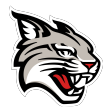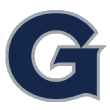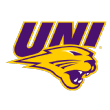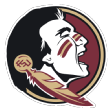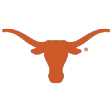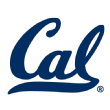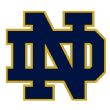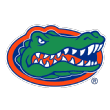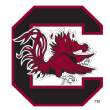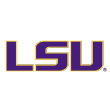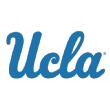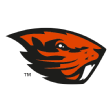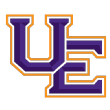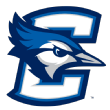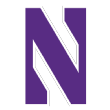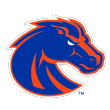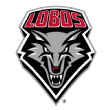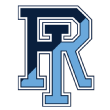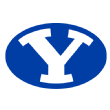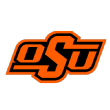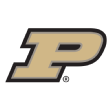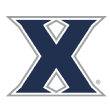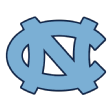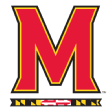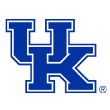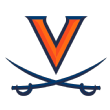1. Tennessee Titans
Joey Bosa, DE, Ohio State Buckeyes*
Even with the Titans' apparent needs on offense, it would be hard for them to pass on the best player in the draft. Bosa is scheme-versatile, with experience playing defensive end on both sides and moving inside to defensive tackle on obvious passing downs. And with 51.0 tackles for loss in 40 career games, he has the production you look for in a top pick.
2. Cleveland Browns
Paxton Lynch, QB, Memphis Tigers*
Lynch has been an extremely efficient passer for the Tigers this season (69.0 completion rate, 28 TDs vs. 3 INTs) -- and he showed up in a big way against Memphis' best opponent (Ole Miss). He has not yet declared for the draft -- and I still have a lot of work to do on him in terms of analyzing his work ethic, leadership skills, mental makeup and durability history -- but Lynch has the physical skills to develop into a good starting NFL QB, which Cleveland needs.
3. San Diego Chargers
Robert Nkemdiche, DT, Ole Miss Rebels*
When healthy and staying out of trouble, Nkemdiche is a force along the defensive front. Just flip on the tape from Ole Miss' upset win over Alabama. Nkemdiche practically lived in the backfield against the Tide, racking up 2.5 tackles for loss. His combination of size (6-foot-4, 296 pounds) and quickness is tough for offensive linemen to handle.
4. Baltimore Ravens
Jalen Ramsey, DB, Florida State Seminoles*
Ramsey can do it all in the secondary: match up in the slot, play center field and stuff the run. It's no surprise, then, that he's a terrific athlete, winning the ACC long-jump title as part of Florida State's track and field team earlier this year. One of the most complete players in this class, Ramsey would be a welcome addition to a Ravens secondary that has struggled the past few seasons.
5. San Francisco 49ers
Jared Goff, QB, California Golden Bears*
This is assuming the 49ers move on from Colin Kaepernick in the offseason. I think Goff would benefit from returning to school for his senior season to get bigger and stronger, but I get the sense that's not going to happen. He got into some bad habits with his mechanics behind an O-line that did not protect well, but when his feet are right, he can be deadly accurate. With a high football IQ and great work ethic, I have faith he will put in the time to get better.
6. Dallas Cowboys
Jaylon Smith, OLB, Notre Dame Fighting Irish*
I won't be surprised if the Cowboys spend an early-round pick in 2016 on a QB to be Tony Romo's heir apparent. But with Lynch and Goff gone, Smith would be a good way for Dallas to bolster its front seven. He shows excellent range against the run and in coverage, and is a far more disruptive pass-rusher than his 4.5 career sacks would lead you to believe.
7. Detroit Lions
Laremy Tunsil, OT, Ole Miss Rebels*
Assuming Tunsil is medically cleared -- he broke his fibula last season -- he projects to be a top-10 pick. At 6-5, 305 pounds, Tunsil is a great athlete for his size and has the potential to develop into a very good pass protector in the NFL. The Lions could use one of those to better keep QB Matthew Stafford upright (80 sacks allowed since the start of 2014).
8. Miami Dolphins
Ronnie Stanley, OT, Notre Dame Fighting Irish
Stanley needs to improve his overall strength, but he has the ideal frame, length and athleticism to play left tackle in the NFL. He moves naturally and is comfortable in space. Stanley definitely benefited from staying another year in school, as he has been more consistent with his balance and hand placement this season.
9. Jacksonville Jaguars
Vernon Hargreaves III, CB, Florida Gators*
Hargreaves would be an ideal pick for a team like Jacksonville, which needs to upgrade its secondary this offseason. He's the best pure cover corner in this class, with four interceptions in 2015 and 10 in his career. Perhaps most impressive: Hargreaves doesn't let his lack of ideal size (5-11, 199) keep him from excelling in press-man coverage.
10. St. Louis Rams
Laquon Treadwell, WR, Ole Miss Rebels*
Treadwell has rebounded nicely from his season-ending leg injury last season, playing all 12 regular-season games and putting together some quality tape. He's a big, physical receiver with outstanding hands and has a really good feel for the position. He reminds me a bit of Dez Bryant when he was coming out of Oklahoma State. Treadwell could be the difference-maker the Rams need on the outside.
11. New Orleans Saints
Jarran Reed, DT, Alabama Crimson Tide
Reed is one of those prospects in which you ignore the stats and turn on the tape. He has been dominant for the Tide this season, often occupying multiple blockers inside and making a ton of plays at or behind the line of scrimmage against the run. And he also has shown the ability to get some push as an interior pass-rusher to move the QB off his spot.
12. Chicago Bears
DeForest Buckner, DE, Oregon Ducks
Buckner is a good athlete for his size (6-7, 300 pounds) and is a handful for offensive linemen when he plays with leverage. He tore up Pac-12 opponents this season, posting 12.0 tackles for loss in nine conference games. With his raw strength, Buckner has the ability to jar blockers and disrupt plays in the backfield.
13. Tampa Bay Buccaneers
Jack Conklin, OT, Michigan State Spartans*
I'm not sure whether Conklin will go pro after this season. He could use another season to continue to improve his hands and technique in pass protection. But if he leaves, he has the potential to develop into a starting offensive tackle in the NFL, so there's a strong chance he'd be a first-round pick. The Bucs need to protect their investment in Jameis Winston, and with a massive frame (6-6, 325 pounds), Conklin shows good mobility for his size.
14. Atlanta Falcons
Myles Jack, LB, UCLA Bruins*
Jack, who tore his ACL in September, has already declared for the draft. He's a difference-maker when healthy, which is exactly what the Falcons need on defense. An outstanding athlete, Jack shows good range against the run and the ability to match up with bigger receivers in the slot. If he checks out physically, he probably will be a top-20 pick.
15. Oakland Raiders
Tre'Davious White, CB, LSU Tigers*
White played a ton of snaps as a freshman in Baton Rouge, so he has great experience playing against top-notch competition. (His performance against Amari Cooper in the 2014 Alabama-LSU game still stands out.) At 5-11, 191 pounds, White has adequate length and a great closing burst when the ball is in the air.
16. Washington Redskins
Michael Thomas, WR, Ohio State Buckeyes*
Thomas lacks elite speed as a vertical receiver, but he is a very good route runner. He knows how to use his 6-3, 210-pound frame when the ball is in the air, displaying outstanding overall ball skills (17 TDs over the past two seasons). Thomas has enough burst to turn a short pass into a long gain.
17. New York Giants
Shaq Lawson, DE, Clemson Tigers*
Lawson made quite the leap in his junior season, as he led the country with 22.5 tackles for loss. That's more than he compiled in his first two seasons at Clemson combined (21.5). While he's not a speed rusher off the edge, Lawson displays a good combination of quickness and power. Regardless of whether Jason Pierre-Paul returns in 2016, the Giants will need to sign/draft another pass-rusher.
18. Buffalo Bills
Taylor Decker, OT, Ohio State Buckeyes
There's a clear top tier of offensive tackles this year (Tunsil, Stanley, Conklin and Decker) and then a big drop-off after that, so I don't expect the fourth guy to last too long. At 6-7, 320 pounds, Decker has long arms and above-average feet for his size. NFL teams should like his toughness, while his inconsistent pad level and hand placement continue to be areas for improvement.
19. Houston Texans
A'Shawn Robinson, DT, Alabama Crimson Tide*
An intriguing subplot with the Texans' pick: Will Penn State QB Christian Hackenberg leave school early? And if he does, will former coach Bill O'Brien be tempted to pull the trigger, despite Hackenberg's continued accuracy struggles? For these purposes, let's assume the Texans don't reach for Hackenberg and make Robinson the pick, further bolstering their D-list. Robinson moves surprisingly well for his massive frame (6-3, 315 pounds). He has shown a consistent ability to push the pocket and is playing the best football of his career.
20. Philadelphia Eagles
Sheldon Rankins, DT, Louisville Cardinals
Rankins is one of the more underrated prospects in this class. He has some versatility and could move around Philly's defensive line. In the tapes I've watched this season, Rankins (6-2, 303 pounds) has used his combination of quickness and power to be a highly disruptive force.
21. Indianapolis Colts
Kendall Fuller, CB, Virginia Tech*
Fuller, who tore his ACL against Purdue in Week 3, declared for the draft on Tuesday. If he clears medically, he will probably be a first-round pick. His ability to play outside or in the slot should make him attractive to NFL teams like the Colts that need more CB depth. In his first two seasons at Virginia Tech, Fuller had nine interceptions and 26 pass breakups.
22. New York Jets
Leonard Floyd, OLB, Georgia Bulldogs*
Floyd has outstanding potential as an edge-rusher. With a lean frame (6-4, 231 pounds), there's no doubt he needs to improve his ability to take on blocks. But Floyd's speed will always be coveted by defenses from the outside linebacker position, particularly for a team like the Jets, who are missing that element in their front seven.
23. Minnesota Vikings
Darron Lee, OLB, Ohio State Buckeyes*
Lee could benefit from returning to school and gaining more experience playing inside, but if he comes out early, he will probably be a first-round pick. A former high school quarterback, Lee has outstanding natural athleticism and speed for his size (6-2, 235 pounds). And he has the production to back it up -- 25.5 tackles for loss, 10 sacks, three INTs and two forced fumbles the past two seasons.
24. Pittsburgh Steelers
Cameron Sutton, CB, Tennessee Volunteers*
The Steelers will need to address the cornerback position somehow this offseason. Sutton would be a good option if they want to pick one early. At 5-11, 196 pounds, he's at his best in press-man coverage. His closing burst has helped him rack up six interceptions and 26 pass breakups over the past three seasons.
25. Kansas City Chiefs
Reggie Ragland, ILB, Alabama Crimson Tide
Ragland is having a monster season -- 90 tackles, 6.5 tackles for loss, six pass breakups, two forced fumbles. Just incredible. He has rare straight-line speed for his size (6-2, 252 pounds) and shows explosive power at the point of attack. While he's still not elite in coverage, Ragland's instincts are improving and he can hold up in an underneath zone.
26. Seattle Seahawks
Maliek Collins, DT, Nebraska Cornhuskers*
Collins is still developing as a player, but he's a hard worker with great feet/hand quickness for his size (6-2, 300 pounds). While his production is down from a year ago (6.5 tackles for loss, 2.5 sacks), the whole team struggled under a new coaching staff. His explosive first step still showed up on tape. Collins would really thrive in Seattle.
27. Green Bay Packers
Su'a Cravens, OLB, USC Trojans*
A former safety-turned-OLB, Cravens shows good cover skills (nine career INTs) and has flashed as a pass-rusher when turned loose off the edge (5.5 sacks). He's a bit of a tweener (6-1, 225 pounds), but his athleticism and versatility makes him a good fit to defend offenses in today's NFL.
28. Denver Broncos
Kenny Clark, DT, UCLA Bruins*
Clark played his best football down the stretch, with three sacks against Washington State in Week 11. He's a powerful run-stuffer who often commands the attention from multiple offensive linemen. He gets in trouble when his pads rise, but is doing a better job using his leverage consistently.
29. Cincinnati Bengals
Will Fuller, WR, Notre Dame Fighting Irish*
Fuller is probably a Round 2 value, but it wouldn't be a huge reach at this point. He has legit vertical speed, averaging 20.45 yards per catch, the most of any FBS player with at least 55 receptions. At 6-foot, 184 pounds, he reminds me a bit of Devin Smith coming out of Ohio State last year.
30. Arizona Cardinals
Carson Wentz, QB, North Dakota State Bison
Wentz would be the ideal quarterback for Bruce Arians to groom behind soon-to-be 36-year-old Carson Palmer. The FCS product isn't ready to start from Day 1, but he has a lot of developmental upside, with good size, arm strength and mobility. He's coming off a wrist injury, so his draft stock could be impacted by how that checks out with teams. But it won't surprise me if Wentz winds up among the top 40 picks.
31. Carolina Panthers
Emmanuel Ogbah, DE, Oklahoma State Cowboys*
Ogbah has always had good length and athleticism, but this year, he's playing with a bit more power and improved technique. At 6-3½, 270 pounds, he has racked up 34.5 tackles for loss and 24 sacks the past two seasons.


